
[The interiors of one the many ruined churches in Bassein - shot as megan takes a picture - probably of me]
The silence rings through the waist high weeds-green, dense and prickly. As you walk through the ruined remains of fortress city encapsulated from the world under a umbrella of creepers, weeds and overgrown banyans. A bulbul watches us from her ivory tower in the mango tree laughing at our endeavor to fight nature’s wall of green
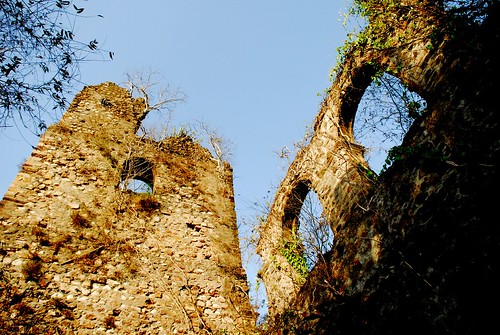
The first Europeans to discover a sea-route to India as your history text-books will rightfully point out was the Portuguese Vasco de Gama, but his ambition for the subcontinent apparently extended no further than his avowed aim, buscar Christaos e especiaria – to seek Christian and spices. The first Portuguese landing in Bombay in 1509, was a rapacious foray, not untypical – they used the elephanta caves as target practice for their canons, captured cows and behaved like their conquistador counterparts in the Americas. Bombay was at the time the property of then king of Gujarat Sultan Muhamed Shah Begada, who initially repulsed the foreign invaders; then gradually worn-out by the repeated assaults he was forced to consolidate his holdings in western India.
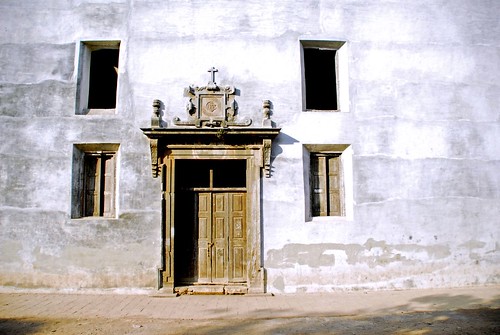
By the year 1534 the King of Portugal held the seven islands plus Bassein, which was a chunk of mainland territory north of Bombay also known as Salsette but now as Vasai. Here at Bassein the Portuguese built themselves a walled city overlooking the sea, which remains to this day. Its chancels, creepers smother the gravestones of the some Bombay’s earliest colonialists; it seems to have remained untouched, like Sleeping Beauty’s citadel, since the day the Portuguese were forced to vacate hastily by a local Mahratha army. It is a poignant reminder of what was, and of what Bombay itself might have been today had history taken another turn.
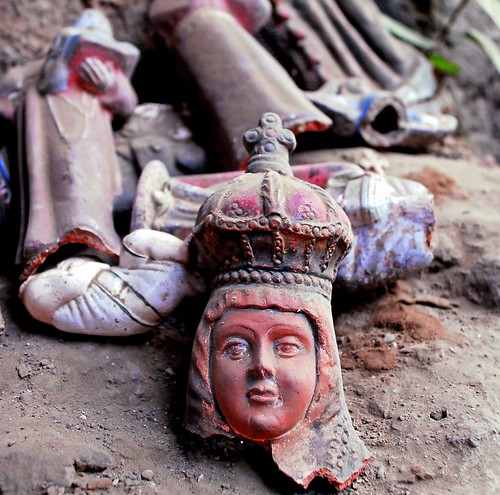
[Pieces of Portuguese pottery at Bassein, Vasai]
Trees and bushes block every trail. The ruins you can see are draped in moss and creepers, their walls dangerously pregnant with pepal shoots. There are other ruins the forest has swallowed whole. The state transport bus from Vasai Road station dropped me close to a ruin where fishermen were mending nets. Only the walls and a vaulted roof, at the far end of the building, remain. Two raised platforms under the vaulted portion suggest this was a church. The walls have slits like windows that make you imagine them as stained glass windows.
As you walk through the ruins the columns, arches and stairways nonetheless speak of a grand assembly hall or possibly a monastery . Walking around it, you can hear the drone of an organ, the rustle of skirts and polite clinks of glass. A hand catches me around the shoulder. A fisher boy, about 15, had joined me. He wanted to show me a mandir further inside. "It is modelled on Goye ka Safri," he offered by way of inducement. It took a while, but I finally figured out he meant St Francis Xavier's church in Goa. My guide said parts of Josh and Kambakht Ishq were shot in this church. The past and present coalesce.
Children at Naigaon - the fishing village at Bassein's north gate.
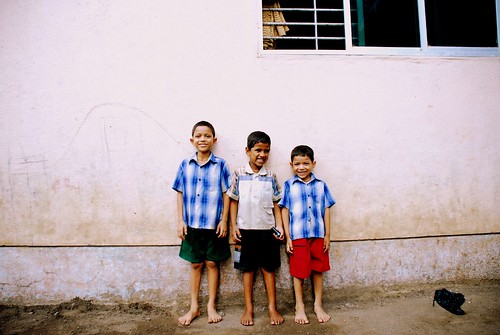

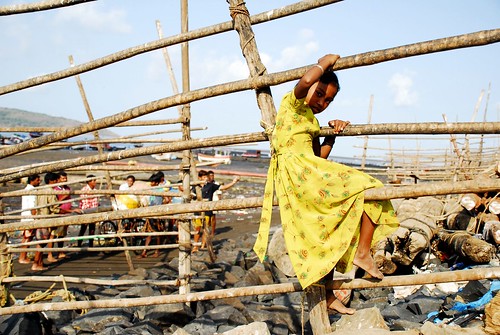
Getting there -
Bassein or Vasai is a suburb of Mumbai and getting there is easy.Its connected by the western line - a Vihar Fast will get you there from all stations on the line. You can take an auto or a state transport bus from the station to the fort.
Unknown
Hi, We are templateify, we create best and free blogger templates for you all i hope you will like this blogify template we have put lot of effort on this template, Cheers, Follow us on: Facebook & Twitter